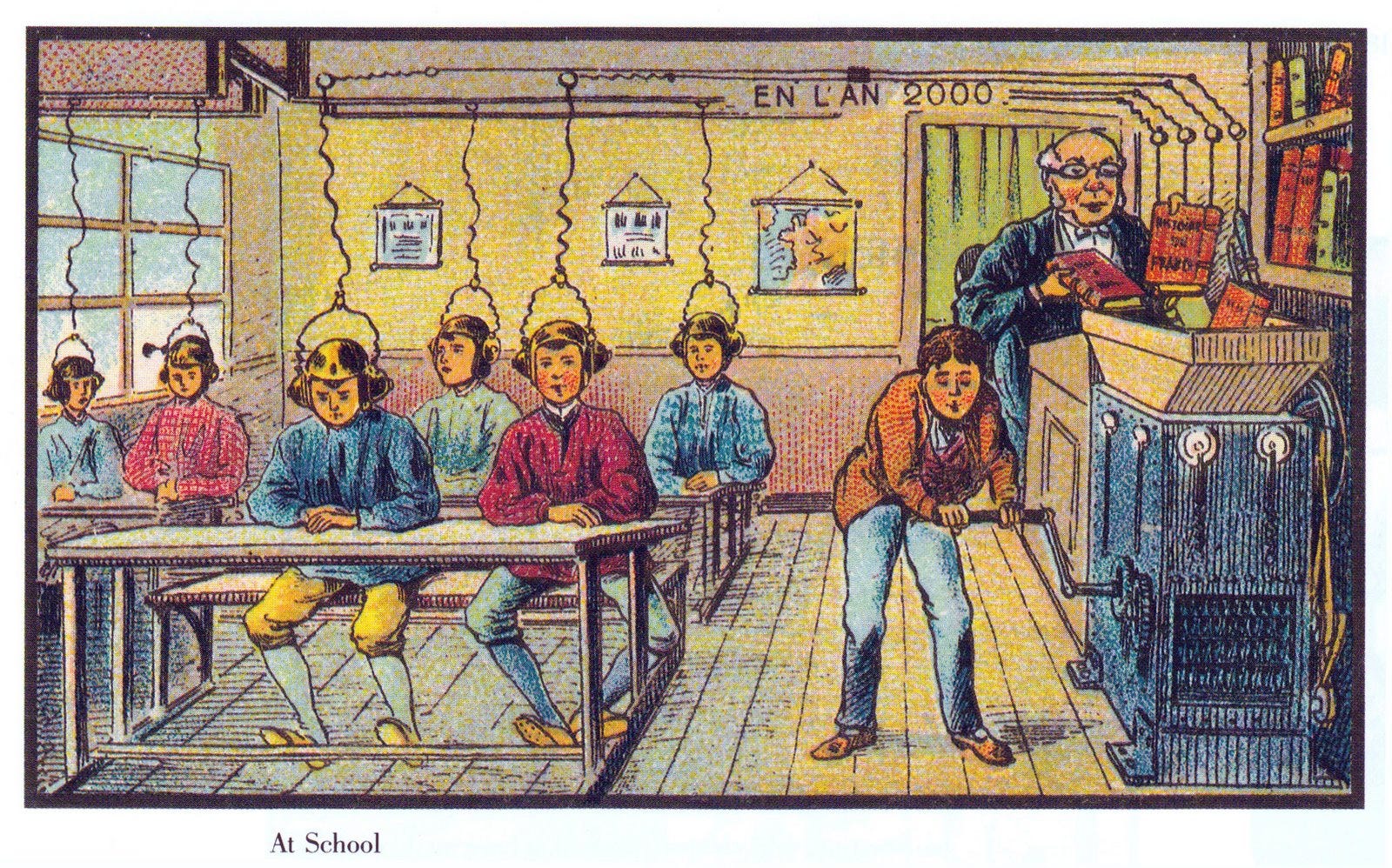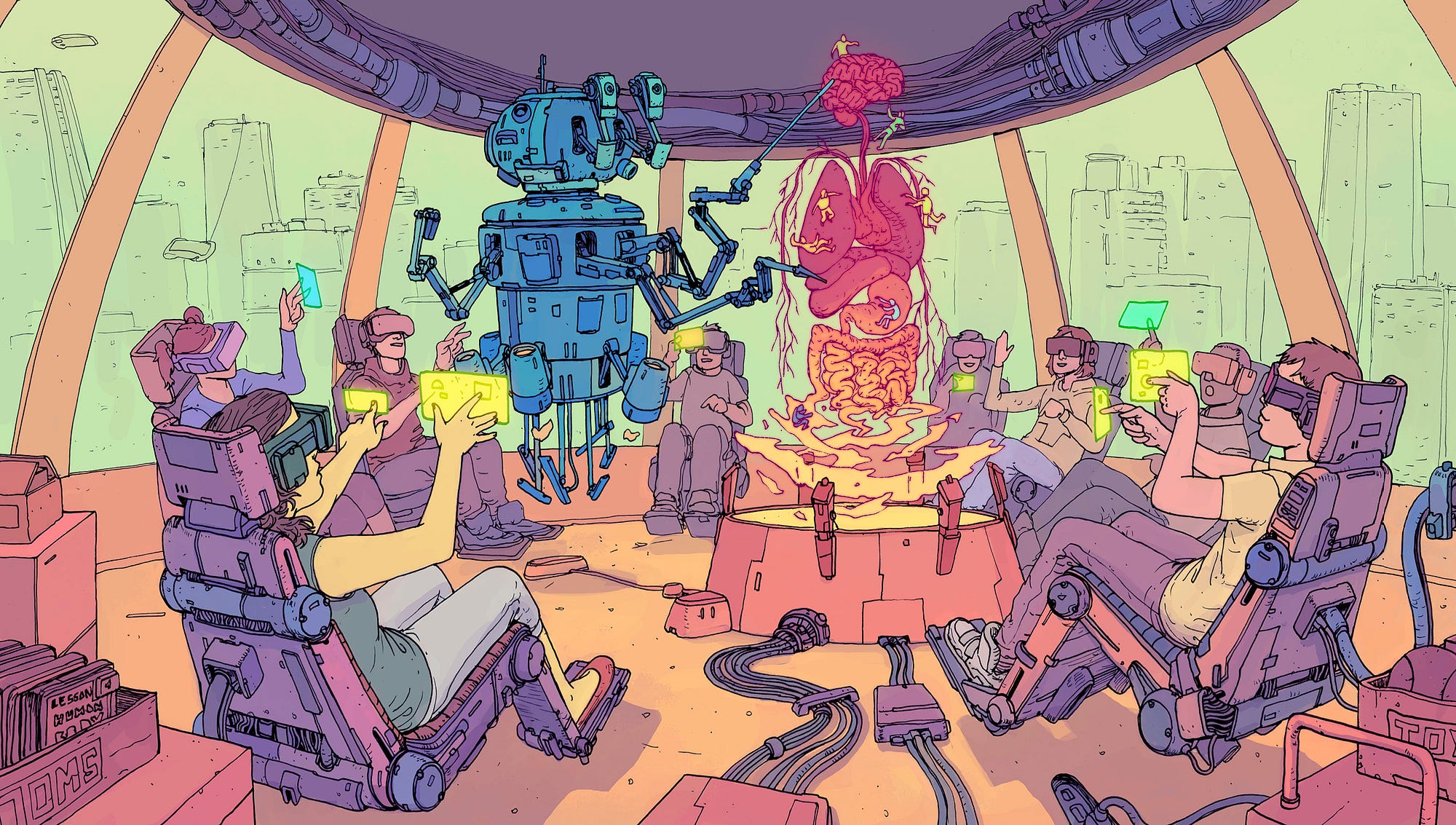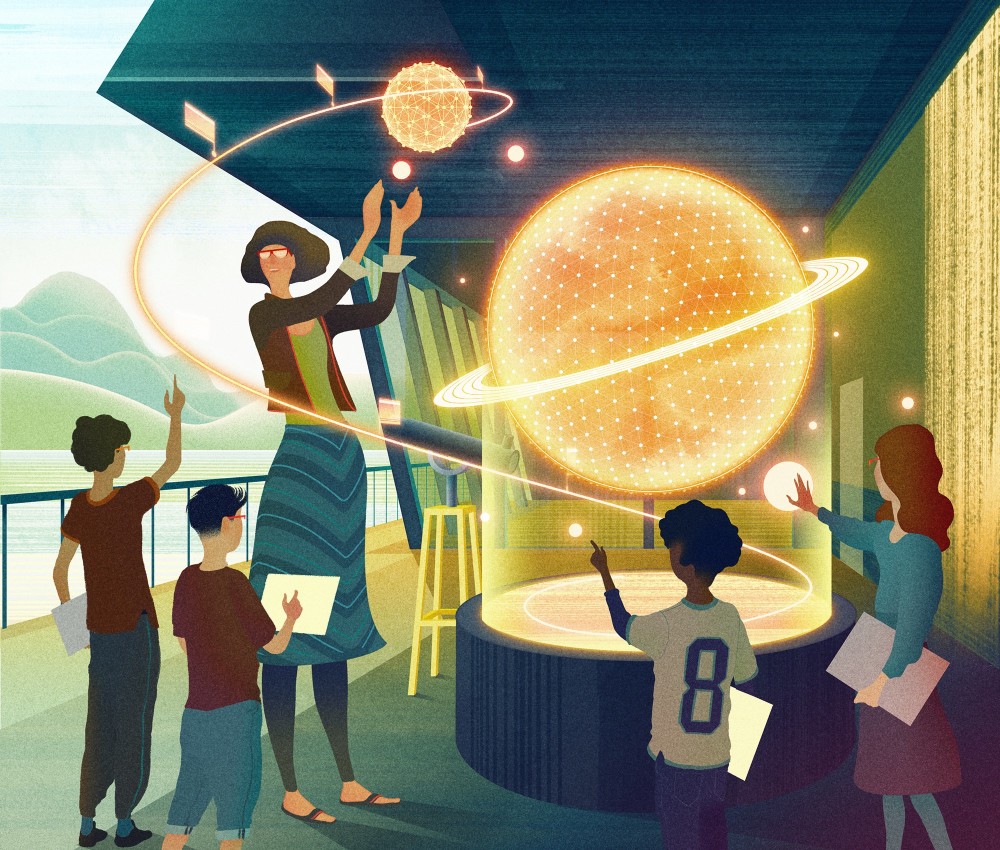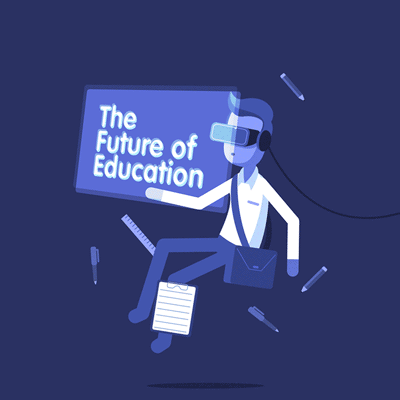Automated Teachers, Augmented Reality And Floating Chairs
Three illustrators envision the classroom of the future.


Artists have creatively depicted the future for centuries, from the neo-futuristic visions of Syd Mead (best known for his work on Blade Runner,Alien, and Tron) to Hajime Sorayama, whose brilliant futuristic design forAIBO (a robotic dog developed by Toshitada Doi at Sony) garnered the highest design award in Japan and a spot in the Museum of Modern Art’s (MoMA) permanent collections.
Depictions of propeller-powered ships once littered the creative sky of pamphlets seeking to depict the future. And now that people (in the U.S at least) spendan average of 444 minutes every day looking at screens, the future we imagine is filled with robots and screens. What will the classroom look like 35 years from now? We invited a few illustrators to reflect on it. Here’s what they came back with.

Josan Gonzalez
Sabadell, Spain
Arobot teacher assists students and guides them through the lessons; they learn more directly (it’s also more practical) using virtual reality headsets to take a trip inside the human body, for example, where they discover anatomy and biology in a pretty amazing way. The possibilities are endless. They learn firsthand about flora, fauna, geography, and so on.
Using robots as teachers doesn’t necessarily mean replacing the human teachers. Handing part of the teaching process to the machines gives teachers more time to prepare and create educational content, monitor each student’s performance, and adapt lessons to individual learning curves.
Floating chairs — potentially using quantum levitation — help the students move, tilt, and rotate within the space (while using virtual reality). They also provide better ergonomics and enable monitoring of students’ health and physical condition. Automated teachers and virtual reality make classes more dynamic and fun. Students have individual content that is adapted to their own learning progression instead of having the rigid classrooms of today.

Tim Beckhardt
New York, New York
The Ocunet is a decentralized educational virtual-reality streaming network reaching every participating provider using .edu’s state-of-the-art Panoptic headset. As our expanding civilization reaches new frontiers, the Ocunet delivers a universal knowledge experience through the most immersive technology available today.
Recycling
The submerged infrastructure of Earth’s former public-education solutions is repurposed as housing for the vast server network that houses the Ocunet.
Education
Teachers have been relieved of the stress of child-behavior management present under previous systems. After receiving certification training, educators can now focus their skills on managing the Ocunet—editing our vast database to keep our students fully immersed in the latest curriculum.
Security
As with educators, the administrators of the previous methods now have a position designed to fully utilize their skills. At all times, principals process incoming student data while superintendents vigilantly secure the Ocunet against attacks from outside dissidents.

Sam Chivers
Wilmington, United Kingdom
Technology has already completely reshaped the classroom in recent years, and I think it’s set to continue on this trajectory. Although still in it’s infancy, I think augmented reality (AR)—the overlaying of audio and visual computer-generated information onto real-world environments through wearable technology such as Google Glass—could become a truly powerful teaching aid in years come. It will help make concepts that are fairly theoretical, like the human neural system, much easier to grasp. At the same time, it could be really fun and make the classroom of the future more mobile, flexible, and connected.
The development of holographic technologies could replace or at the very least complement the electronic blackboard, creating 3-D visualizations, and at some point I think this could interact with AR in interesting ways.
Some things in the classroom should remain constant. No amount of technology can replace the subtle skills of a great teacher.

Gif by Chris Phillips for Bright.
Bright is made possible by funding from the Bill & Melinda Gates Foundation. Bright retains editorial independence. The Creative Commons license applies only to the text of this article. All rights are reserved in the images. If you’d like to reproduce this on your site for noncommercial purposes, please contact us.

